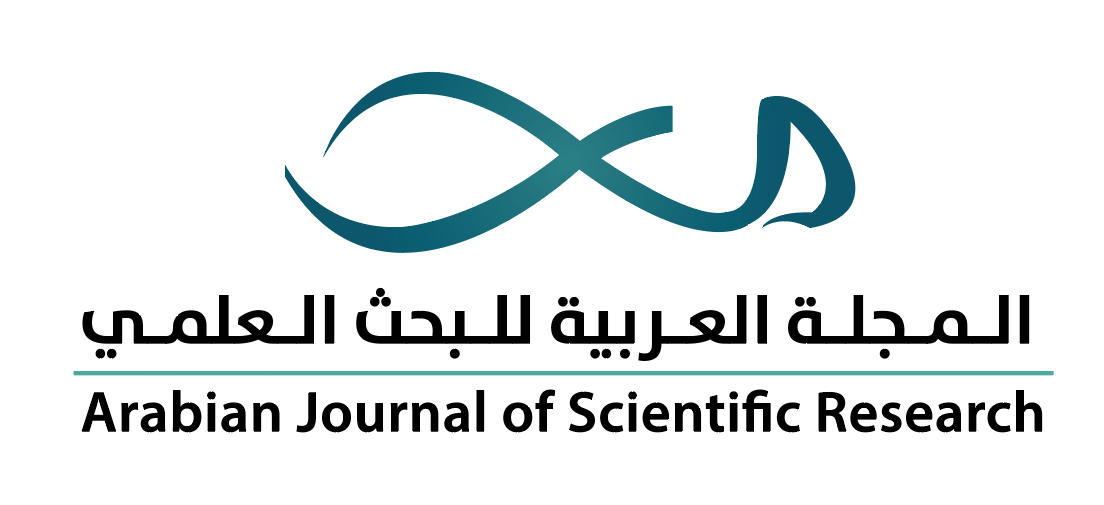-
oa دراسة تأثير الري بالمياه المستعملة على النمو النباتي لأشجار الزيتون وعلى الخصائص الفيزيائية والكيميائية للتربة
- Source: Arabian Journal of Scientific Research-المجلة العربية للبحث العلمي, Volume 1(2020), Issue 2, Nov 2020,
-
- 08 August 2020
- 27 October 2020
- 15 November 2020
- Previous Article
- Table of Contents
- Next Article
Abstract
الملخص
يمثّل نقص المياه العذبة في المناطق الجافة وشبه الجافة تحديًا بيئيًا، يستوجب البحث عن حلول بديلة وناجعة. وفي هذا الصدد، انكبت فرق البحث على دراسة إمكانية إعادة استعمال مياه الصرف الصحي في مجالات عديدة منها المجال الفلاحي. ولهذا، اعتمدنا تقنية الري بالتنقيط مدة عام على أشجار زيتون من صنف شملالي في بستان زيتون يقع في الوسط الشرقي للبلاد التونسية. رُويت الأشجار بمياه الصرف الصحي غير المعالجة (UWW) الآتية من مصنع لإنتاج لحوم الدواجن ومشتقاتها، يقع بالقرب من موقع الدراسة. تمت مقارنة نتائج معايير النمو النباتي (ارتفاع الشجرة، وقطر الجذع، وعدد الفروع، وطول الفروع، ومجموع البوليفينول) والخصائص الفيزيائية والكيميائية للمياه والتربة باستخدام جهاز (Pastel UV Secomam) لأشجار الزيتون المروية بمياه الصرف الصحي غير المعالجة بأخرى رُويت بمياه الصنبور (TW). أظهرت النتائج أن مياه الصرف الصحي لمصنع الدواجن احتوت على تركيز عالٍ من المواد العالقة، ومحتوى الأكسجين الكيميائي، ومحتوى الأكسجين البيولوجي، والكربون العضوي الكلي، والموصلية الكهربائية. كما سُجلت قيم مرتفعة لمعايير النمو النباتي (ارتفاع الشجرة، وقطر الجذع) في المجموعة المروية بمياه الصرف الصحي غير المعالجة، على عكس المجموعة المروية بمياه الصنبور التي سجلت تركيزًا عاليًا لمجموع البوليفينول في الأوراق. بيّنت نتائج مقارنة خصائص التربة قبل و بعد عمليّة الريّ بمياه الصرف الصحي غير المعالجة (المجموعة 1) و بمياه الصنبور (المجموعة 2) أنّه لا وجود لفرق إحصائي معنوي في خصائص التربة بين المجموعتين و ذلك في ما يخص الأس الهيدروجيني، كمية أكسيد البوتاسيوم ونسبة الكلس النشط. في حين أنّ خصائص المجموعة 1 قد سجّلت ارتفاعا ملحوظا في قيمة الموصليّة الكهربائية ونسبة خماسي أكسيد الفوسفور، وانخفاضا في نسبة المواد العضويّة بعد عمليّة الريّ.
In arid and semi-arid regions, scarcity of good-quality water resources due to human, industrial, and agricultural consumptionisa great concern.Hence, the reuse of wastewater could be a realistic way to reduce water shortage. Thus, this study was conducted for a year on olive trees cv. Chemlali in afield located in the eastern center of Tunisia, using drip irrigation. The trees were irrigated with untreated wastewater (UWW) from poultry meat and its derivatives factory located near the site of the study. Physico-chemical parameters of water and soil were determined using Pastel UV by Secomam. Growth parameters’ values (plant height, trunk diameter, the number and the length of branches, and total polyphenols) were measured. Results were compared to olive trees irrigated with tap water (TW). Results of wastewater physico-chemical analysis showed a high concentration on suspended solids, chemical oxygen demand, biochemicaloxygen demand, total organic carbon, and electricalconductivity. High growth parameters values (plant height and trunk diameter) were recorded in the UWWgroup as opposed to the TW group which recorded a high concentration on total leaves polyphenols.The comparison of results before and after irrigationdid not show a statistical difference in soil properties (soil pH, potassium amount, and active lime ratio) in both groups TW and UWW.For electrical conductivity and phosphorus percentage, a significant increase was recordedin the UWW groupaccompanied witha decrease in the proportion of organic matter.


